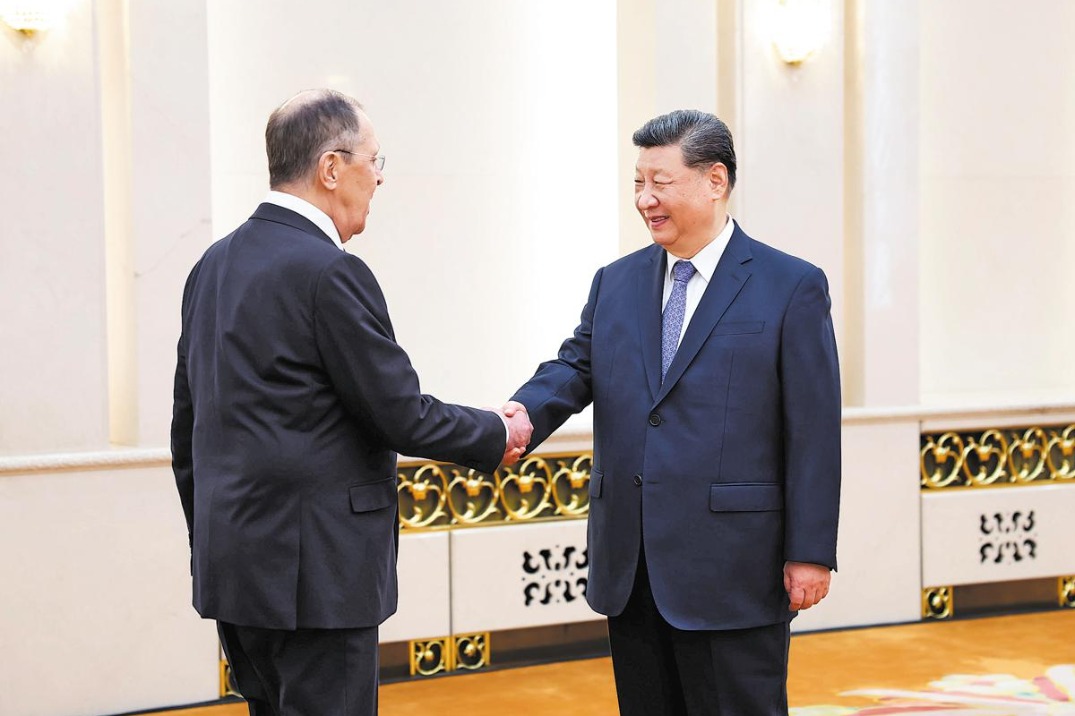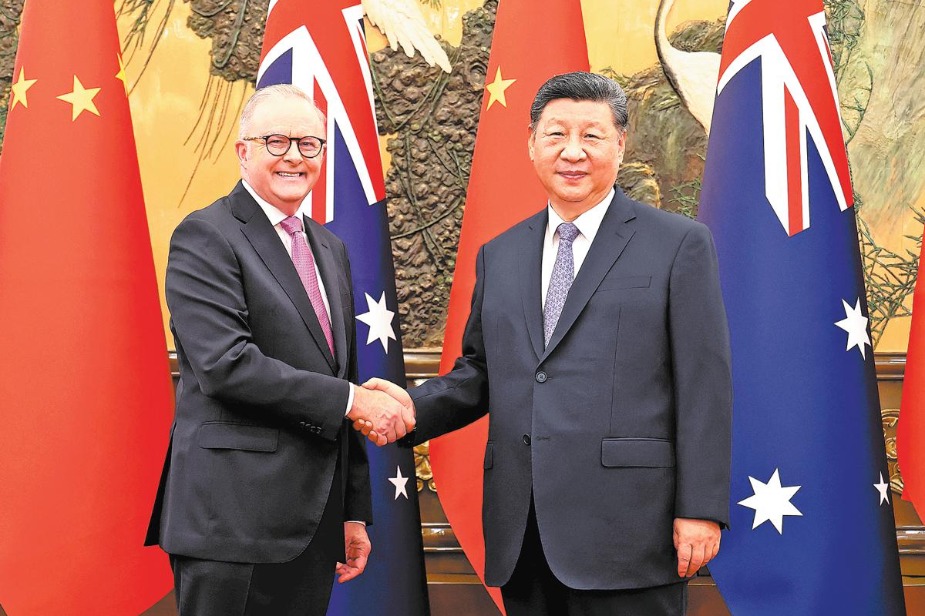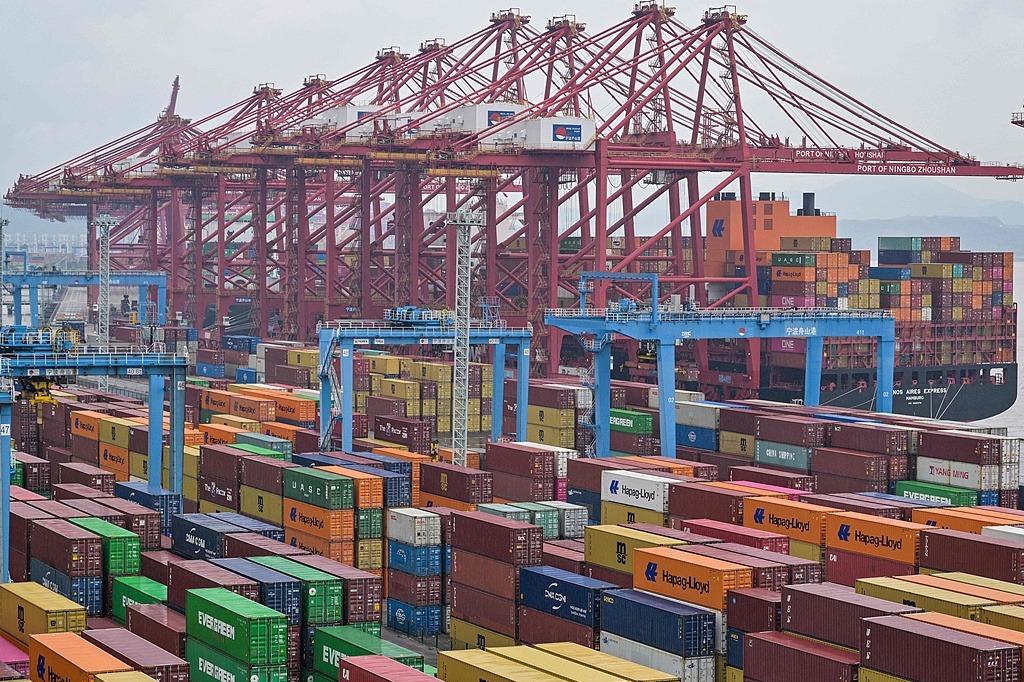No push over


The US will not be able to exclude China from the regional production and supply chains
In a trilateral summit in Washington in April, the United States, the Philippines and Japan reached agreement on maritime security cooperation, and announced that the US and Japan will support the Philippines through a set of new economic partnerships, including developing the Luzon Economic Corridor, stepping up investment in infrastructure, and building clean energy and semiconductor supply chains.
These moves are part of the US' latest efforts to strengthen its alliances and advance "de-sinicized "supply chains in the "Indo-Pacific "region.
As technological and industrial revolutions are reshaping the international and regional orders, the US has focused on supply chain competition with China to "confine" China and maintain its dominance in the "Indo-Pacific "regional order.
As a result, economic issues in the region are "securitized" and future security issues will be "economized". As long as a country is tied to the US supply chain, it is inevitable that its security policies will be aligned with the US.
Impacted by the ongoing technological transformation and geopolitical competition, the global economy and security equilibrium is undergoing a historic shift. In the Asia-Pacific region, the US is hyping up "economic security "and pushing its allies to restructure regional production and supply chains, with a focus on high-tech industries such as semiconductors, in an attempt to "decouple" economies from the Chinese economy.
Since 2023, the US and its allies have accelerated this process. The US, Japan and the Republic of Korea have implemented various policies targeting key industries such as semiconductors, new energy vehicles and digital trade, and incorporated them into bilateral and multilateral economic cooperation with Southeast Asian and South Asian countries.
In South Asia, India has been leveraging the reshuffle of the US production and supply chain, aiming to achieve fast-track growth in the manufacturing sector, a move supported by the US.
Other South Asian countries, however, are struggling with weak manufacturing foundations and challenges in industrial transformation. If this trend continues, South Asia may shift from a mutually complementary economic pattern to an India-centered model, with South Asian countries becoming part of the US-dominated global production and supply chain.
In Southeast Asia, the Philippines has fully aligned itself with the US, while countries such as Vietnam and Malaysia are betting on both sides. While becoming the US and Japan's new favorite destinations for investment and technology transfer, they are not giving up cooperation with China, thus competing and cooperating with China at the same time.
During Joe Biden's visit to Vietnam in September 2023, he acknowledged Vietnam's significant potential as a major player in the semiconductor industry. He expressed support for the rapid development of Vietnam's semiconductor ecosystem and willingness to enhance cooperation to elevate Vietnam's status in the global semiconductor supply chain.
In March 2024, during US Secretary of State Antony Blinken's trip to the Philippines, he visited local semiconductor companies, describing the Philippines as an "increasingly critical partner" in ensuring the resilience of the chip supply chain.
With the goal of "de-risking "and "de-sinicization", the US-led Western countries are pushing for the transfer of production and supply chains, which will lead to a fragmented economic pattern in the Asia-Pacific region. Smaller countries will be forced to take sides, affecting their approaches to security and foreign policies.
However, it is not an easy task for the US to exclude China from its production and supply chains. After decades of participating in Asia-Pacific cooperation, China has formed close economic and trade ties with countries in the region and is at the heart of regional integration.
Asia-Pacific economic integration is still steadily progressing, with particularly active trade investment, infrastructure, and digital interconnectivity. Regional supply chains and industrial networks are deeply intertwined. At the same time, China's advantages in geographic position, industrial ecosystem, market size and talent pool provide vast opportunities for cooperation between China and other economies in the Asia-Pacific region.
Strategic adjustments among major powers in the Asia-Pacific region are expected to continue into the future. Under the overlapping impact of the US-China strategic competition and the technological and industrial revolutions, the international and regional landscape, once based on maintaining sovereignty and military strength, will be increasingly influenced by economic and technological competition in the future. This will increase the complexity and uncertainty of the security situation in the Asia-Pacific region.
Facing the complex changes in the Asia-Pacific region, it was proposed at China's Central Foreign Affairs Work Conference in December 2023 that building a community with a shared future for mankind is how China responds to questions of what kind of world to build and how to build it. The goal of building a community with a shared future for mankind is to build an open, inclusive, clean and beautiful world of lasting peace, universal security and shared prosperity.
Guided by this principle, China will seek to prudently handle relations with major powers, particularly the US, in dealing with Asia-Pacific affairs, especially in a time when the US is using the production and supply chains as a new tool to contain China.
Although the US' comprehensive strategic competition with China is not going to change fundamentally in the short term, both sides should value the necessary communication to avoid misunderstandings and misjudgments. A series of high-level interactions between China and the US since 2024 have demonstrated their basic consensus of stabilizing bilateral relations.
More important, China should continue to actively work with its neighbors to build a community with a shared future in the region, strengthen its strategic coordination with small and medium-sized countries in the region, mitigate the risks of regional division and confrontation, and seize the opportunities for unity and cooperation.
China has always attached importance to the aspirations of small and medium-sized countries in the Asia-Pacific region for economic development and regional cooperation. In the future, China should continue to advocate the Global Development Initiative, advance the high-quality cooperation on the Belt and Road Initiative, explore new growth drivers with a focus on emerging sectors, lead the restructuring of regional production and supply chains, and work with small and medium-sized countries in the region to achieve stable and sustainable socioeconomic development.
The author is a researcher at the National Institute of International Strategy at the Chinese Academy of Social Sciences. The author contributed this article to China Watch, a think tank powered by China Daily.The views do not necessarily reflect those of China Daily.
Contact the editor at editor@chinawatch.cn.


































